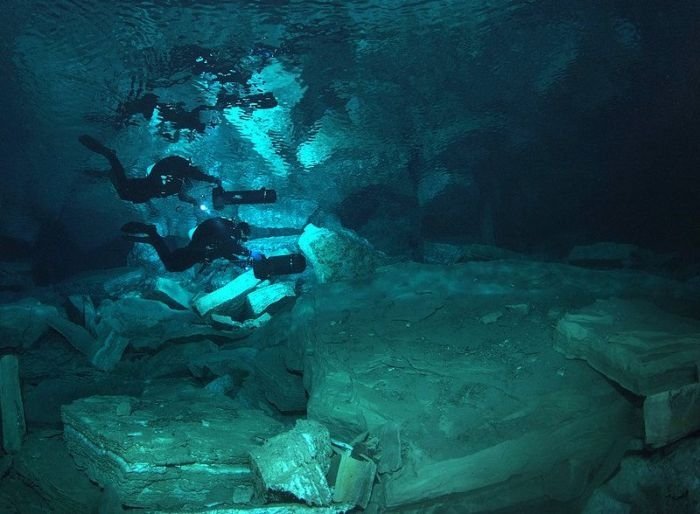|
|
Cave Diving
|
Australia has many spectacular water filled caves and sinkholes, but unlike the UK, most Australian cave divers come from a general ocean-diving background. The "air-clear" water of the sinkholes and caves can be found in the Mount Gambier area of south-eastern Australia. The first cave and sinkhole dives here took place in the very late 1950s, and until the mid 1980s divers generally used single diving cylinders and homemade torches, and reels, resulting in most of their explorations being limited.
A series of tragedies between 1969 and 1973 in which 11 divers drowned (including a triple and a quadruple fatality) in just four karst features - "Kilsbys Hole", "Piccaninnie Ponds", "Death Cave" and "The Shaft" - created much public comment and led to the formation of the Cave Divers Association of Australia (CDAA) Inc. in September 1973. As a consequence of the CDAA's assessment programs, divers are rated at various levels, and today they comprise Deep Cavern, Cave, and Advanced Cave.
During the 1980s the Nullarbor Plain was recognized as a major cave-diving area, with one cave, Cocklebiddy, being explored for more than 6 kilometers, involving the use of large sleds to which were attached numerous diving cylinders and other paraphernalia, and which were then laboriously pushed through the cave by the divers. In more recent years divers have been utilizing compact diver-towing powered scooters, but the dive is still technically extremely challenging. A number of other very significant caves have also been discovered during the past 10 years or so; the 10+ (Lineal) kilometre long Tank Cave near Mount Gambier, other very large features on the Nullarbor and adjacent Roe Plain as well as a number of specific sites elsewhere, and nowadays the cave diving community utilizes many techniques, equipment and standards from the U.S. and elsewhere.
The CDAA is one of a number of organisations responsible for the administration of cave diving certification in Australia. Mixed-gas and rebreather technologies can now be used in many sites. All cave diving in the Mount Gambier area as well as at some New South Wales sites and the Nullarbor requires divers to be members of the CDAA, whether in the capacity of a visitor or a trained and assessed member.
|
|









